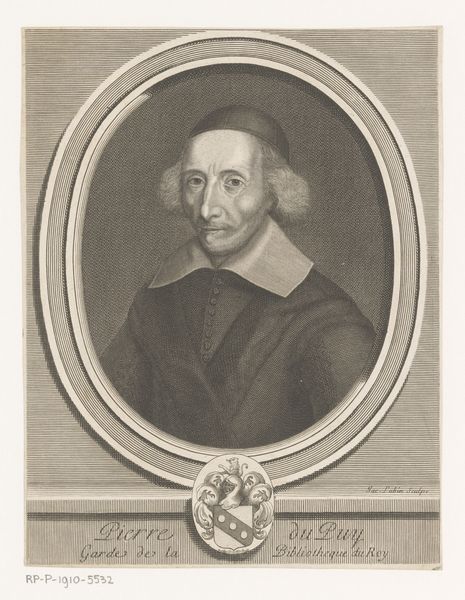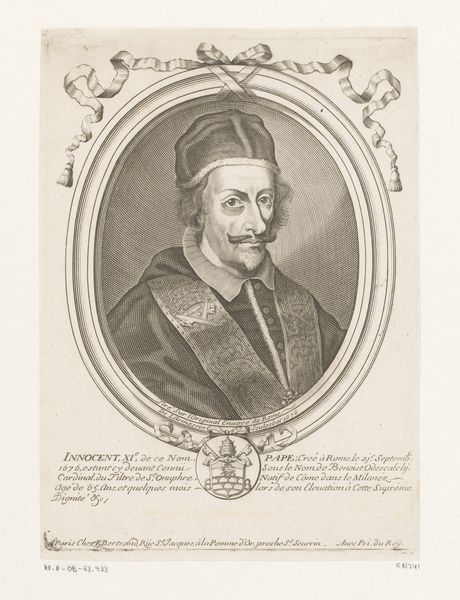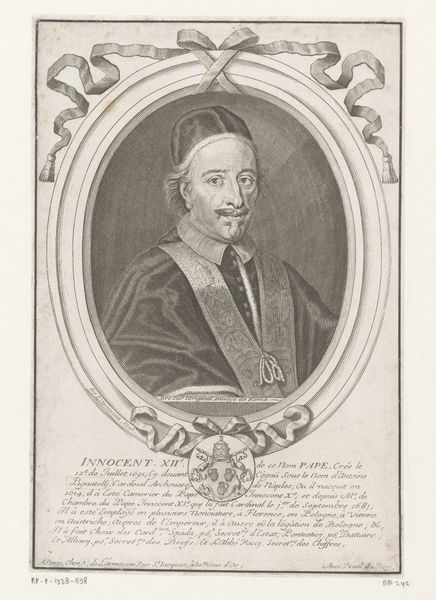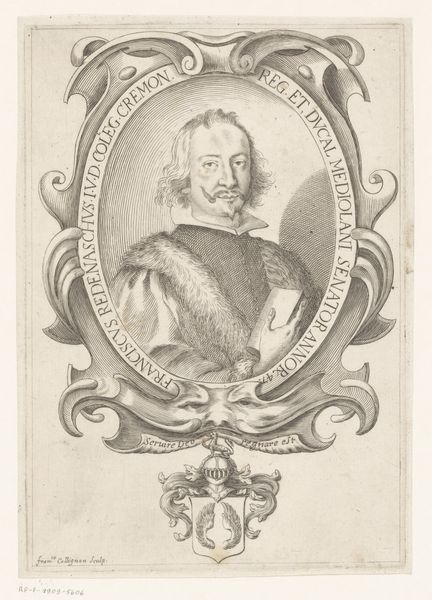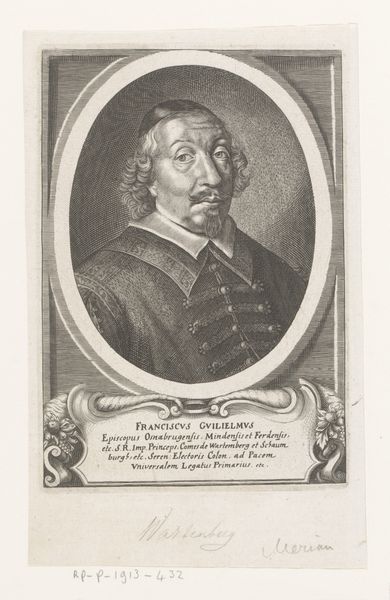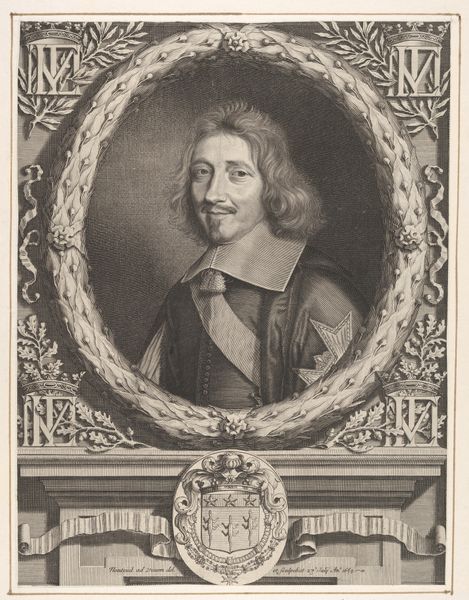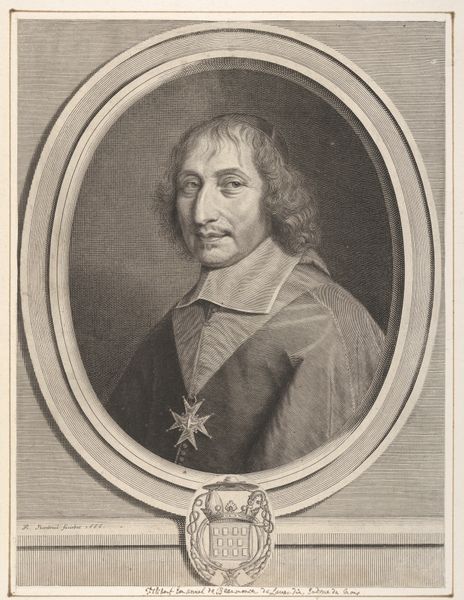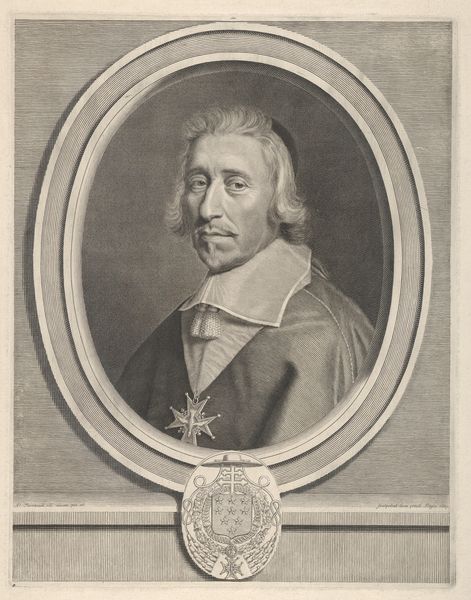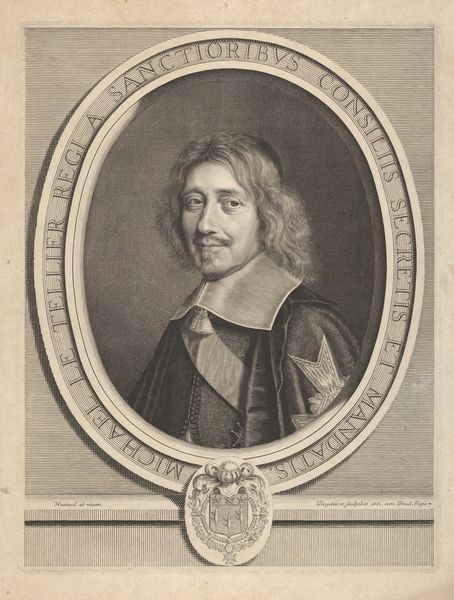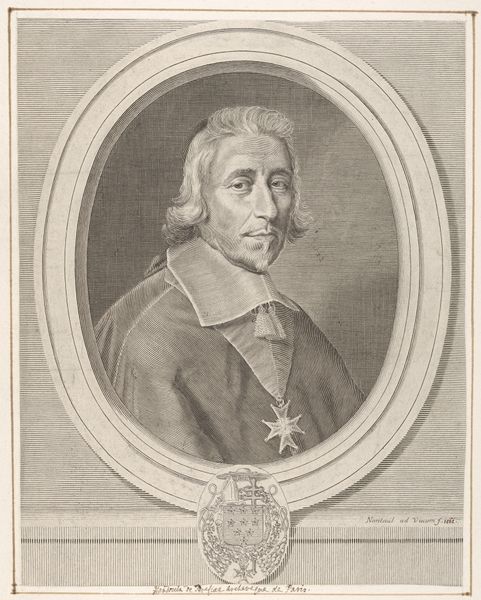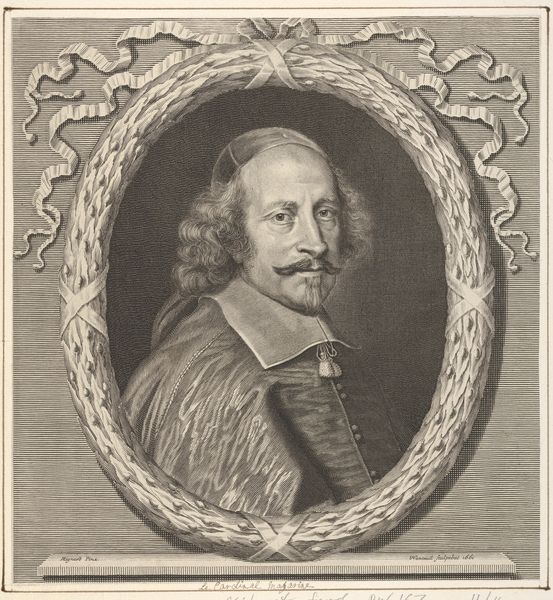
Portret van Armand-Jean Du Plessis, kardinaal de Richelieu 1608 - 1688
0:00
0:00
claudemellan
Rijksmuseum
engraving
#
portrait
#
baroque
#
old engraving style
#
caricature
#
limited contrast and shading
#
portrait drawing
#
history-painting
#
engraving
Dimensions: height 278 mm, width 204 mm
Copyright: Rijks Museum: Open Domain
Curator: This engraving, dating from 1608-1688, offers us a portrait of Armand-Jean Du Plessis, Cardinal de Richelieu. It's currently held in the collection of the Rijksmuseum, and the artist credited is Claude Mellan. Editor: There’s a stark quality to this, despite the baroque elements. It feels surprisingly modern; almost like a caricature, emphasizing the length of his face and the formality of his attire. Curator: Indeed. The meticulous line work is characteristic of Mellan's style, but it’s the symbolic representation of power within the frame that really arrests my attention. Observe the ornate detailing and its arrangement that acts as both a boundary and a setting. Editor: I’m struck by the process of creating such detail using engraving. Imagine the labor and precision involved in carving those lines into a metal plate. And how does that meticulous labor reinforce Richelieu’s own persona of careful and deliberate statecraft? The material reality gives the image its sense of authority. Curator: I agree, the materiality impacts the visual impression. But, consider the composition; the portrait is presented within an oval frame, set against a contrasting rectangular background. What semiotic meaning do we draw from these intersecting shapes? It almost encapsulates the tension of the era, or perhaps, it speaks to Richelieu’s internal conflict as a man of the church versus his involvement in political struggle. Editor: Interesting. I’d take that idea a step further by thinking about the dispersal of these images. Engravings like these would have been reproduced and circulated widely. Who were the consumers of these images, and how did the act of distribution shape their perceptions of power and the church? What was the effect on public consciousness and political sentiment, and was it intended as a tool of propaganda? Curator: That adds an intriguing layer. Examining the reception shifts our understanding beyond simple iconography, doesn’t it? Thank you. Editor: Absolutely. Considering production and context adds new richness.
Comments
No comments
Be the first to comment and join the conversation on the ultimate creative platform.
